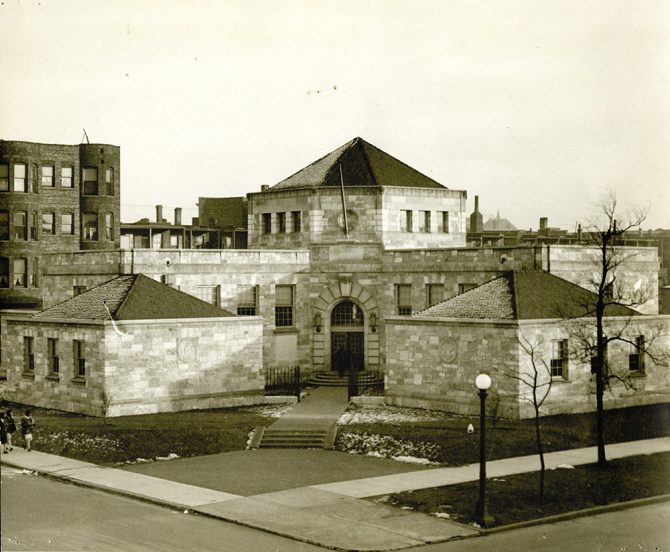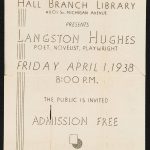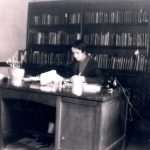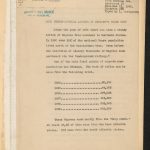Chicago Public Library has digitized materials from two significant archival collections documenting the migration and growth of Chicago's African American community. These collections also shed light on the Chicago Black Renaissance (1930s-1950). Available online for the first time are:
- George Cleveland Hall Branch Digital Collection contains over 150 items documenting the opening and operations of CPL’s George Cleveland Hall Branch, the meeting place for many of the writers of the Chicago Black Renaissance. Among these materials from the George Cleveland Hall Branch Archives are annual reports, library programs and materials relating to the popular and iconic Book Review and Lecture Forum.
- Illinois Writers Project: "Negro in Illinois" Digital Collection includes over a thousand items from the Illinois Writers Project. Many of the Chicago Black Renaissance writers worked on this book project, and the digital collection contains their early draft chapters and research. These writings explore the African American experience in Illinois, including arrival, slavery, social conditions, religions, education, Black business and life in the suburban areas around Chicago.
About the Black Renaissance
"Black Belt" and "Black Metropolis" are terms coined by The Chicago Defender's Robert Abbott and Sinclair Drake's Black Metropolis to describe the Chicago neighborhood settled by African Americans during the Great Migration. James Gentry, a writer for the Chicago Bee newspaper, later popularized Bronzeville as a more positive name.
In the late 1920s, the expansion of the Bronzeville community gave rise to lobbying for a full-service library in the Black community by Dr. George Cleveland Hall and other community activists. This led to the opening of the Hall Branch, named in Hall’s honor, on January 18, 1932. Visionaries Vivian Gordon Harsh, CPL's first Black library manager, and Charlemae Hill Rollins, a children’s librarian and activist, created a milieu where library staff, the community and artists came together to advance the call for equality through reading, educational and cultural programs.
Under the Works Project Administration of President Franklin D. Roosevelt, the Illinois Writers Project used Hall Branch as a meeting site for interviews. When the project ended in 1942, one of the project leaders, Arna Bontemps, offered the collection to Harsh, who was collecting materials that would later form the Vivian G. Harsh Research Collection of Afro-American History and Literature at Woodson Regional Library.
Books Drawing on the Illinois Writers Project
Many African American books were and continue to be published from the research garnered in the Illinois Writers Project.
Arna Bontemps and Jack Conroy wrote They Seek a City, later reissued as Anyplace but Here.
Wallace Best's treatise, Passionately Human, No Less Divine, chronicles the rise of Black gospel in Chicago in the wake of the Great Black Migration.
The Illinois Writers Project still serves as the basic ingredient for early African American history in Chicago. In 2013, Brian Dolinar, a professor at the University of Illinois, Urbana, published The Negro in Illinois, finishing the work on the Illinois Writers Project started by Arna Bontemps and Jack Conroy more than 70 years ago.








Add a comment to: Illinois Writers Project, Hall Branch Digital Collections Document Early Black History in Chicago